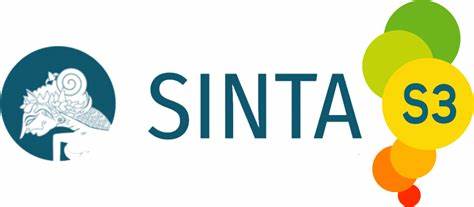INVESTIGATING TEACHER AUTONOMY AT ENGLISH DEPARTMENTS OF THE KURDISTAN REGION OF IRAQ
Keywords:
Teacher Autonomy, English Departments, Kurdistan Region, Educational Reform, Professional Development.Abstract
This study investigates teacher autonomy in the English departments of universities in the Kurdistan Region of Iraq, focusing on three objectives: (1) assessing the overall degree of teacher autonomy, (2) examining differences in autonomy based on gender and teaching experience, and (3) identifying institutional, cultural, and political factors influencing professional decision-making. Utilizing a descriptive quantitative design, the research employed the Teacher Autonomy Perception Scale (TAPS), a 20-item questionnaire rated on a 5-point Likert scale, covering curriculum design, classroom management, assessment, and professional development. Data were collected from 76 educators at Salahaddin University Erbil and Jihan Private University Erbil to ensure diversity in demographic factors. Statistical analysis, including one-sample t-tests, independent t-tests, and one-way ANOVA, revealed that overall teacher autonomy scores significantly exceeded the expected benchmark. Male educators reported notably higher autonomy levels than female educators, highlighting gender-based disparities, while no significant differences emerged between institutions or across teaching experience groups. The findings underscore the impact of institutional policies and cultural norms on teacher autonomy and stress the need for gender-sensitive policies and professional development initiatives, offering valuable insights for future educational reforms in the Kurdistan Region.
References
Al Asmari, A. (2013). Practices and Prospects of Learner Autonomy: Teachers' Perceptions. English Language Teaching, 6(3), 1-10.
Al Rabai, A. A. (2014). Teaching English in the Arab world: A future in turmoil. Education, 4(5), 126-133. DOI: 10.5923/j.edu.20140405.04
Atrushi, D. S., & Woodfield, S. (2018). The quality of higher education in the Kurdistan Region of Iraq. British Journal of Middle Eastern Studies, 45(4), 644-659. https://doi.org/10.1080/13530194.2018.1430537
Benson, P. (2013). Teaching and researching: Autonomy in language learning. Routledge.
Borg, S. (2005). Teacher cognition in language teaching. In Expertise in second language learning and teaching (pp. 190-209). London: Palgrave Macmillan UK.
Borg, S., & Al-Busaidi, S. (2012). Learner autonomy: English language teachers’ beliefs and practices. ELT journal, 12(7), 1-45.
Creswell, J. W., & Creswell, J. D. (2017). Research design: Qualitative, quantitative, and mixed methods approaches. Sage publications.
Darling-Hammond, L., & Rothman, R. (2014). Teaching in the flat world: Learning from high-performing systems. Teachers College Press.
Day, C., Sammons, P., & Stobart, G. (2007). Teachers matter: Connecting work, lives and effectiveness. McGraw-Hill Education (UK).
Dornyei, Z. (2007). Research methods in applied linguistics. Oxford university press.
Field, A. (2024). Discovering statistics using IBM SPSS statistics. Sage publications limited.
Hargreaves, A., & Fullan, M. (2015). Professional capital: Transforming teaching in every school. Teachers College Press.
Huang, J., Lock, K. Y. N., & Teng, F. (2019). Autonomy in English language teaching: A case study of novice secondary school teachers in Hong Kong. Chinese Journal of Applied Linguistics, 42(1), 3-20.https://doi.org/10.1515/CJAL-2019-0001
Jw, C. (2009). Research design-qualitative, quantitative, and mixed methods approaches. SAGE, Ca; ofprnia.
La Ganza, W. (2008). Learner autonomy–teacher autonomy: Interrelating and the will to empower. In Learner and Teacher Autonomy: Concepts, realities, and response (pp. 63-79). John Benjamins Publishing Company.
Leithwood, K., Sun, J., & Schumacker, R. (2020). How School Leadership Influences Student Learning: A Test of “The Four Paths Model”. Educational Administration Quarterly, 56(4), 570-599. https://doi.org/10.1177/0013161X19878772
Little, D. (1995). Learning as dialogue: The dependence of learner autonomy on teacher autonomy. System, 23(2), 175-181. https://doi.org/10.1016/0346-251X(95)00006-6
Pearson, L. C., & Hall, B. W. (1993). Initial construct validation of the teaching autonomy scale. The Journal of Educational Research, 86(3), 172-178. https://doi.org/10.1080/00220671.1993.9941155
Pearson, L. C., & Moomaw, W. (2005). The relationship between teacher autonomy and stress, work satisfaction, empowerment, and professionalism. Educational research quarterly, 29(1), 38-54.
Qadir, S., & Omar, R. (2023). Attitudes of Kurdish university students towards the English language, English language education policies, and English language learning purposes. Humanities Journal of University of Zakho, 11(4), 938-950. https://doi.org/10.26436/hjuoz.2023.11.4.1207
Qolamani, K. (2022). Effectiveness of Online Teaching & Learning during Covid-19 Pandemic-Social Studies Students’ Perspective. Humanities Journal of University of Zakho, 10(3), 856-862. https://doi.org/10.26436/hjuoz.2022.10.3.866
Reinders, H., & White, C. (2016). 20 years of autonomy and technology: How far have we come and where to next? Language Learning & Technology, 20(2), 143– 154.
Smith, R. C. (2003). Teacher education for teacher-learner autonomy. In Symposium for language teacher educators: Papers from three IALS symposia (pp. 1-13). Edinbur-gh: IALS, University of Edinburgh.
Sofi-Karim, M. (2015). English language teaching in the Kurdistan Region of Iraq. Webster University.
Tavakol, M., & Dennick, R. (2011). Making sense of Cronbach's alpha. International journal of medical education, 2, 53. doi: 10.5116/ijme.4dfb.8dfd.
Vernez, G., Culbertson, S., & Constant, L. (2014). Strategic Priorities for Improving Access to Quality Education in the Kurdistan Region--Iraq. Monograph. RAND Corporation. PO Box 2138, Santa Monica, CA 90407-2138.
Downloads
Published
Issue
Section
License

This work is licensed under a Creative Commons Attribution-ShareAlike 4.0 International License.
The author is responsible for acquiring the permission(s) to reproduce any copyrighted figures, tables, data, or text that are being used in the submitted paper. Authors should note that text quotations of more than 250 words from a published or copyrighted work will require grant of permission from the original publisher to reprint. The written permission letter(s) must be submitted together with the manuscript.




